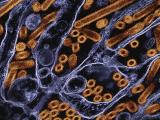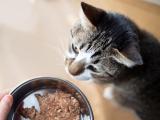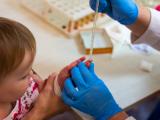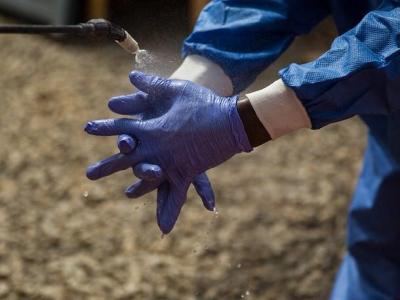Dec 5, 2011
Researchers profile Egypt's H5N1 threat
A year-long poultry surveillance project in six of Egypt's 27 governorates revealed several features of H5N1 avian flu in the country, including the surprising finding that no other avian flu strains were detected. The researchers conducted the study from Aug 2009 through July 2010, reporting their findings in Emerging Infectious Diseases. The group focused on the main poultry production regions. Of 5,562 samples from 58 sites, the H5N1 incidence was 5%, with most of the findings in chickens, with rates higher for commercial farms than for backyard poultry. They noted that the high incidence of H5N1 at commercial farms calls into question the effectiveness of H5 vaccines in use at the facilities. The virus was also commonly found in poultry slaughterhouses and live bird markets, representing both urban and rural threats. Sampling of a wild egret population in Cairo also turned up the virus, which the authors said poses a threat to the
city's population and to a nearby zoo. H5N1 findings in poultry didn't vary by month, though human cases seemed to spike in January and February, suggesting that other factors play a role. They concluded that the virus remains a threat to humans and that more efforts are needed to monitor its evolution and circulation in poultry.
December Emerg Infect Dis study
Ceremonial sparrows may harbor H5N1 risk
Sparrows used in Buddhist rituals are very susceptible to H5N1 avian flu under experimental conditions, transmit avian flu to other birds, and harbor infectious particles on their feathers, which may pose a risk to humans, according to a study by Cambodian and Hong Kong researchers. The group used highly pathogenic H5N1 to inoculate Eurasian tree sparrows, a species used as merit release birds, which are believed to increase positive karma when kissed and released during Buddhist rituals. They found the birds to be highly susceptible to infection, with fatality rates approaching 100% 5 days after inoculation. In addition, although they did not detect fatal transmission between sparrows, they did note seroconversion of exposed birds. Also, up to 100% of chickens and 50% of ducks exposed to the sparrows died of avian flu. The researchers also found "large quantities" of H5N1 virus on the sparrows, particularly on their feathers, from which they
recovered infectious particles.
Dec 2 PLoS One study
South Korean researchers find 2009 H1N1 in canine flu reassortant
South Korean researchers recently reported that they identified an H3N1 novel flu virus from a dog that represents a reassortant between the 2009 H1N1 virus and a canine H3N2 subtype. The isolate turned up in a surveillance program designed to monitor canine flu in animal shelters and kennels. Of 50 influenza A samples from May 2007 through Dec 2010, all were H3N2 subtypes, except for one H3N1. When researchers examined its genetic characteristics, they found that its hemagglutinin (HA) gene was similar to that of H3N2 circulating in South Korean dogs, but the other segments were closely related to the 2009 H1N1 virus. They compared the pathogenicity of the new virus by experimentally infecting dogs with it and the two parent viruses. Dogs infected with H3N2 showed typical canine flu symptoms, but those exposed to the novel H3N1 subtype and the 2009 H1N1 virus didn't show any symptoms. The team did find, though, that
the H3N1 virus could be shed via the respiratory tract and cause moderate lung lesions. The researchers wrote that the reassortment event in dogs could suggest that companion animal behavior may determine the animals' ability to serve as intermediate hosts for flu viruses.
Nov 30 J Gen Virol abstract
Hillary Clinton to speak at 5-year review of Biological Weapons Convention
US Secretary of State Hillary Clinton will speak this week at the 5-year review conference on the Biological Weapons Convention (BWC), marking the first time such a high-ranking official has represented the United States at such a meeting, according to Global Security Newswire. Thomas Countryman, assistant secretary of state for international security and nonproliferation, said Clinton would offer specific proposals in three areas: increasing global capacity to detect and respond to disease outbreaks, working with the scientific and industrial communities to ensure that life-science technologies are not misused, and "strengthening the implementation" of the 1975 treaty. Policy experts said Clinton's appearance would draw considerable public attention to a meeting that otherwise would have drawn little notice, the report said. Barry Kellman, a weapons-control expert at DePaul University's College of Law,
called Clinton's planned appearance "a shock," adding, "I hope what she puts on the table is worthy of her appearance." The BWC, which has been ratified by 165 countries, bans the acquisition, development, stockpiling, and use of biological and toxin weapons. At the Seventh Review Conference, which began today in Geneva, the members will review the operation of the BWC, consider the work done since the last review in 2006, address relevant developments in science and technology, and discuss future activities, the United Nations said in a statement.
Dec 2 Global Security Newswire report
Dec 1 UN press release about the BWC review meeting



















